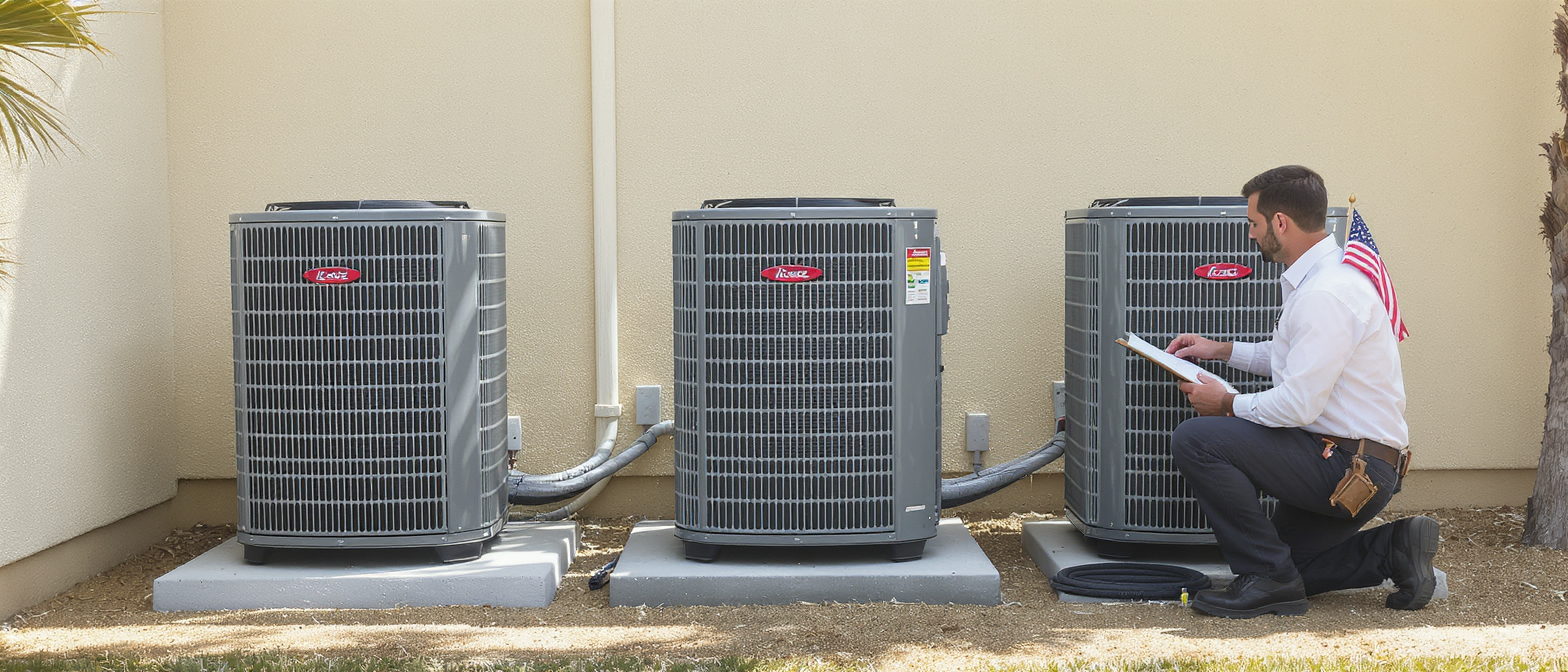Can I get a discount for servicing multiple systems?

Short answer
Often, yes—many providers offer cost efficiencies when several HVAC systems are serviced during the same visit. The actual discount depends on system count, access, scope, brand mix, and timing. Below is a practical guide so you can ask the right questions, compare quotes fairly, and avoid risks that can void warranties or create insurance issues.
What counts as “multiple systems”?
In Southern California, it’s common to see two or more systems per property: two central ACs for multi‑story homes, a rooftop package unit plus a ductless mini split in a garage or ADU, a server room split system, or a small Variable Refrigerant Flow (VRF) network in a commercial suite. Each configuration changes labor time, testing, and materials, which affects any multi‑system HVAC discount.
Why discounts may be available
- One trip, multiple units: Travel and setup happen once.
- Shared prep and tools: Gauges, ladders, safety equipment, and cleaning setups are used across units.
- Bulk consumables: Filters, pan tabs, or coil cleaner are easier to stage in quantity.
- Consolidated diagnostics: A tech can run similar tests back‑to‑back, improving efficiency.
How much you save depends on factors such as roof vs. attic access, distances between condensers and air handlers, age and condition, coil cleaning needs, refrigerant type, and whether airflow balancing or duct repairs are requested.
Common pricing models for multi‑unit service
- Tiered per‑system rates: The first unit at standard rate, additional units at a lower rate.
- Flat bundle: One combined price for a defined checklist across multiple systems.
- Annual maintenance plans: Multi‑system pricing built into seasonal visits.
- Commercial or property manager volume: Site‑based or portfolio‑based preventive maintenance pricing.
When a discount may be limited
- Complex access: Crane access for rooftop units or difficult attic crawls.
- Time‑intensive diagnostics: Refrigerant leak searches, electrical faults, or control issues.
- Code or safety corrections: Float switches, drain repairs, disconnects, or wiring fixes.
- Specialized cleaning: Heavily impacted coils requiring removal and chemical cleaning.
What to include when requesting a quote
To get an accurate multi‑unit HVAC pricing proposal, share:
- System count, type, and location (e.g., 2 split systems, 1 package unit, 1 ductless mini split).
- Model/serial numbers if available, last maintenance date, and known issues.
- Accessibility notes (attic height, roof pitch, ladder access, parking).
- Preferred scheduling windows and whether off‑peak timing is OK.
Ask for an itemized maintenance checklist so you can compare apples to apples. A thorough servicing typically includes: amperage and capacitor checks, contactor inspection, thermostat calibration, refrigerant superheat/subcooling readings, static pressure and airflow evaluation, drain line flush, evaporator/condenser coil cleaning method, duct leakage observations, and filter specifications. Confirm warranty status on parts and the credentials of the licensed HVAC technician.
Safety and insurance considerations
DIY on multiple systems can be risky. Electrical shock, improper refrigerant handling, and damaged components are real concerns. EPA Section 608 governs refrigerant handling, and incorrect work can void manufacturer warranties. Many insurance carriers and home warranty contracts require that servicing be performed by a qualified, licensed professional and documented properly. That’s one reason a multi‑system discount matters—bundling visits with a trained pro can keep costs manageable while meeting insurance requirements.
Seasonal timing matters
Scheduling during shoulder seasons (spring and fall) can make multi‑unit HVAC pricing more favorable. Flexibility helps: grouping equipment by location, allowing a wider arrival window, and confirming filter sizes in advance reduce time on site and support bundle efficiencies.
Special note on ductless and VRF systems
Multi‑head ductless mini split systems and VRF/VRV networks require manufacturer‑specific procedures for diagnostics, communication wiring, and charge verification. Precision here is essential to prevent capacity loss or nuisance faults. Training also matters. Our family team at #1 AC Guys has factory training from Fujitsu (Japan), Mitsubishi Elektrik (Thailand), Midea (China), Gree (China), and Hier (China), which is especially relevant for ductless and VRF maintenance across residential and commercial sites.
Who we are
#1 AC Guys is a fourth‑generation family of engineers with 80+ years in engineering. We handle both residential and commercial systems, including large and complex projects. Our mission is simple and constant: healthy air at home for a healthy life. We serve Los Angeles County and nearby areas including Orange County, Ventura County, and Western Riverside County. Example cities include Los Angeles, Long Beach, Pasadena, Glendale, Santa Clarita, Burbank, Beverly Hills, Torrance, Santa Monica, Anaheim, Irvine, Santa Ana, Fullerton, Huntington Beach, Ventura, Oxnard, Thousand Oaks, Riverside, Corona, Temecula, and Murrieta.
Quick checklist before you ask for a multi‑system discount
- List each system with location and basic specs.
- Note known issues (noises, hot/cold spots, drainage, breaker trips).
- Confirm access (keys, gates, roof ladders).
- Share filter sizes and desired MERV rating.
- Be flexible on dates—shoulder seasons can help.
Bottom line
Yes, discounts for servicing multiple systems are often possible, especially when scheduling allows one efficient, documented visit. The exact savings depend on access, equipment type, and scope. Above all, use a licensed HVAC technician—insurers often require it, and proper maintenance protects performance, safety, and warranties across all your systems.
Yasmine is currently an Associate Professor of Psychology at Mount Saint Mary College where she teaches a wide array of courses in the Psychology department. She is a Fulbright Scholar spent a year working at the Medical Decision Making Center at Ono Academic College in Israel.
Yet, as many higher education professionals can surely attest to, I have also witnessed the other challenge in group decision making. In academia, engaging in critical dissent is encouraged (reviewed by Jetten & Hornsey, 2014), and while this is a fine attribute, practically,
